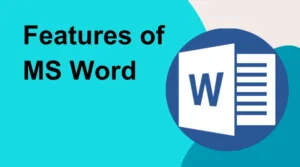Excel is one of the most popular and widely used software applications in the world. It is a spreadsheet program that allows users to create, manage, and analyze data in a variety of ways. While many people are familiar with the basic features of Excel, there are also a number of lesser-known features that can help users to save time and improve their productivity. In this article, we will explore some of these lesser-known features.
Table of Contents
Flash Fill
Flash Fill is a feature that allows you to automatically fill in data based on patterns that Excel recognizes in your data. For example, if you have a column of names in the format “First Last” and you want to split them into separate columns for first and last name, you can use Flash Fill to automatically do this for you.
Pivot Tables
Pivot tables are a powerful tool in Excel that allows you to quickly summarize and analyze large amounts of data. You can use pivot tables to group data, calculate totals and averages, and create charts and graphs to visualize your data.
Conditional Formatting
Conditional formatting allows you to highlight cells in your spreadsheet based on certain criteria. For example, you can highlight all cells that contain a certain word or phrase, or all cells that are above or below a certain value.
Text to Columns
Text to Columns is a feature that allows you to split data in a single column into multiple columns based on a delimiter, such as a comma or space. This is useful when you have data that is not in a format that can be easily analyzed.
VLOOKUP
VLOOKUP is a function that allows you to search for a specific value in a table or range of cells, and return a corresponding value from another column in the same row. This is useful when you need to extract data from a large dataset.
AutoSum
AutoSum is a feature that allows you to quickly calculate the sum, average, count, maximum, or minimum of a selected range of cells.
Goal Seek
Goal Seek is a feature that allows you to find the input value needed to achieve a specific result. For example, you can use Goal Seek to find the interest rate needed to achieve a certain monthly payment on a loan.
Sparklines
Sparklines are small, simple charts that can be inserted into cells in your spreadsheet. They are useful for visualizing trends and patterns in your data.
Data Validation
Data Validation is a feature that allows you to set rules for the data entered into a specific cell or range of cells. For example, you can require that a cell contain a number between a certain range, or that it contains a specific text value.
Slicers
Slicers are a feature in Excel that allows you to filter data in a pivot table or pivot chart. They are useful for quickly exploring and analyzing large datasets.
Custom Number Formatting
Custom number formatting allows you to change the appearance of numbers in your spreadsheet. For example, you can use custom number formatting to display negative numbers in red or to display numbers with a certain number of decimal places.
Array Formulas
Array formulas are formulas that allow you to perform calculations on multiple cells at once. They are useful for performing complex calculations that cannot be done with a single formula.
AutoFill
AutoFill is a feature that allows you to quickly fill a series of cells with a pattern. For example, you can use AutoFill to quickly fill a column with a series of dates or numbers.
Freeze Panes
Freeze Panes is a feature that allows you to lock certain rows or columns in place so that they remain visible as you scroll through your spreadsheet. This is useful when you are working with large datasets that span multiple pages.
Quick Analysis
Quick Analysis is a feature in Excel that allows users to quickly and easily perform basic data analysis tasks on selected data. This feature provides a range of options for formatting data, creating charts and graphs, applying conditional formatting, and performing calculations, all with just a few clicks.
For example, if you have a column of sales data, you can use Quick Analysis to quickly create a bar chart to visualize the data, or to apply conditional formatting to highlight cells with low sales values. You can also use Quick Analysis to perform calculations such as sum, average, and count on the selected data.
Quick Analysis is a useful tool for users who are new to Excel, or for those who need to quickly perform basic data analysis tasks without the need for more advanced features. It can save time and improve productivity by providing quick and easy access to commonly used data analysis tools.
Conclusion
Excel is a powerful tool that offers a wide range of features and functionalities to users. While many users are familiar with the basic features of Excel, there are numerous lesser-known features that can help users improve their productivity, streamline their workflows, and perform more advanced data analysis.
Some of the key lesser-known features of Excel include functions such as Flash Fill, Goal Seek, and Quick Analysis, as well as tools for data validation, conditional formatting, and customizing charts and graphs. By taking the time to explore and master these features, users can unlock the full potential of Excel and achieve greater efficiency and accuracy in their work.
While Excel can seem daunting at first, with practice and exploration, users can become proficient in the use of both basic and advanced features. Whether you are a beginner or an experienced user, taking the time to learn these lesser-known features can help you take your Excel skills to the next level and achieve greater success in your work.






2 thoughts on “15 Excel Features You Probably Don’t Know About”
Hi Thanks putting this together! I question what AI will do in this space over the next five years.
You’re welcome! The evolution of AI in the next five years is an exciting prospect. Predictions suggest advancements in natural language processing, improved understanding of context, and enhanced capabilities for more complex tasks. AI may play a larger role in various industries, from healthcare to finance, and we might see increased integration in our daily lives through smart devices. Ethical considerations and responsible AI development will likely become more critical topics as well. It’s an evolving field, and we can anticipate many innovative applications and improvements. Feel free to share your thoughts or ask for more specific information on any aspect!